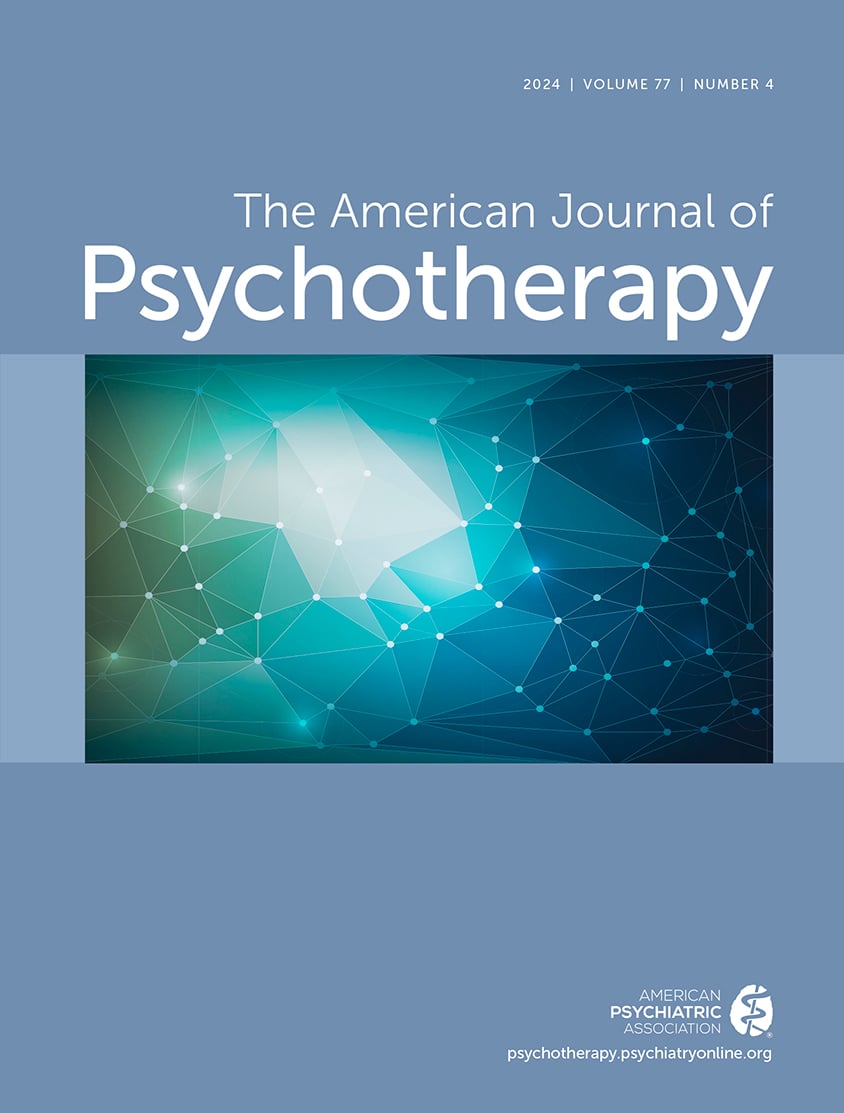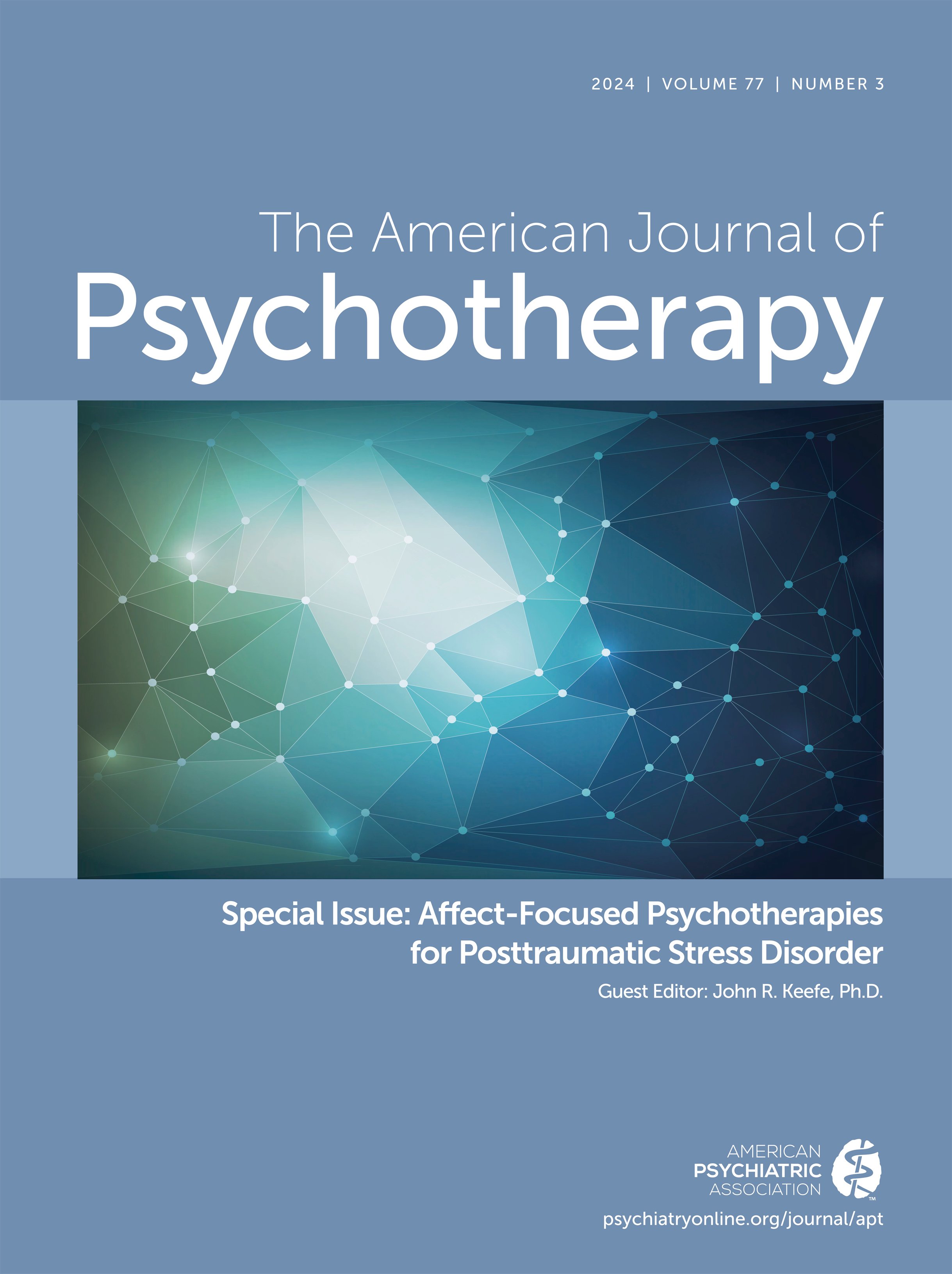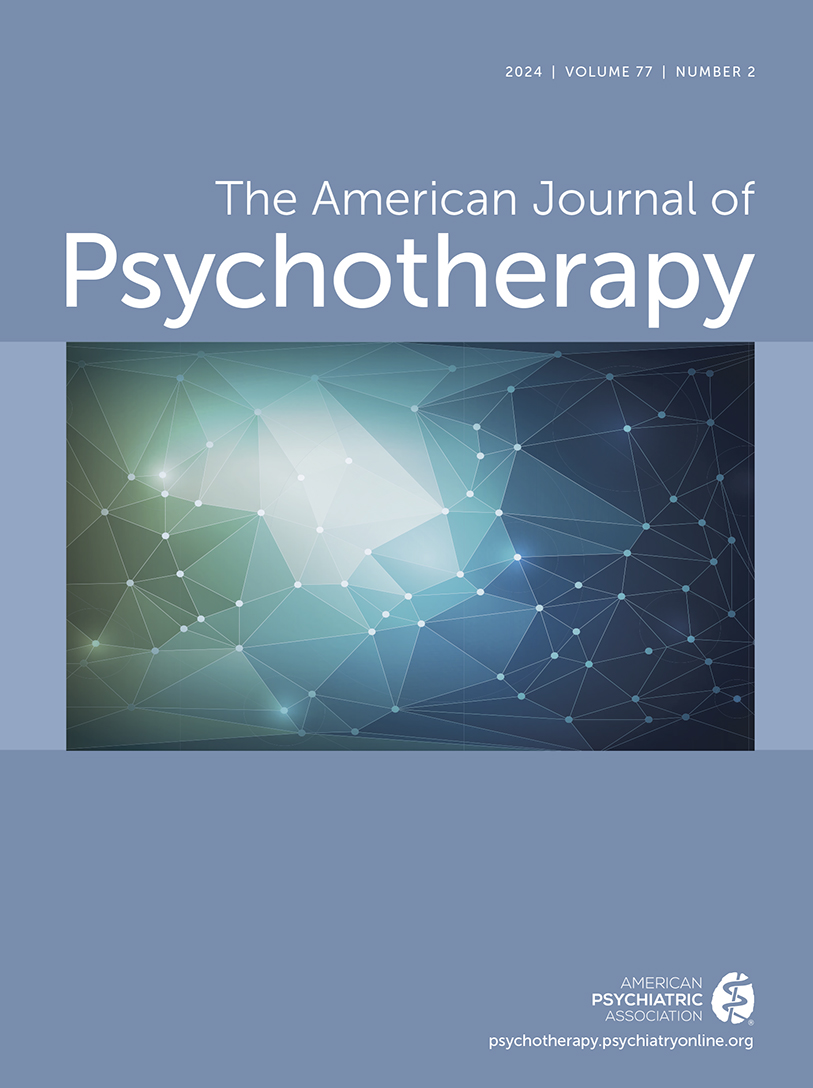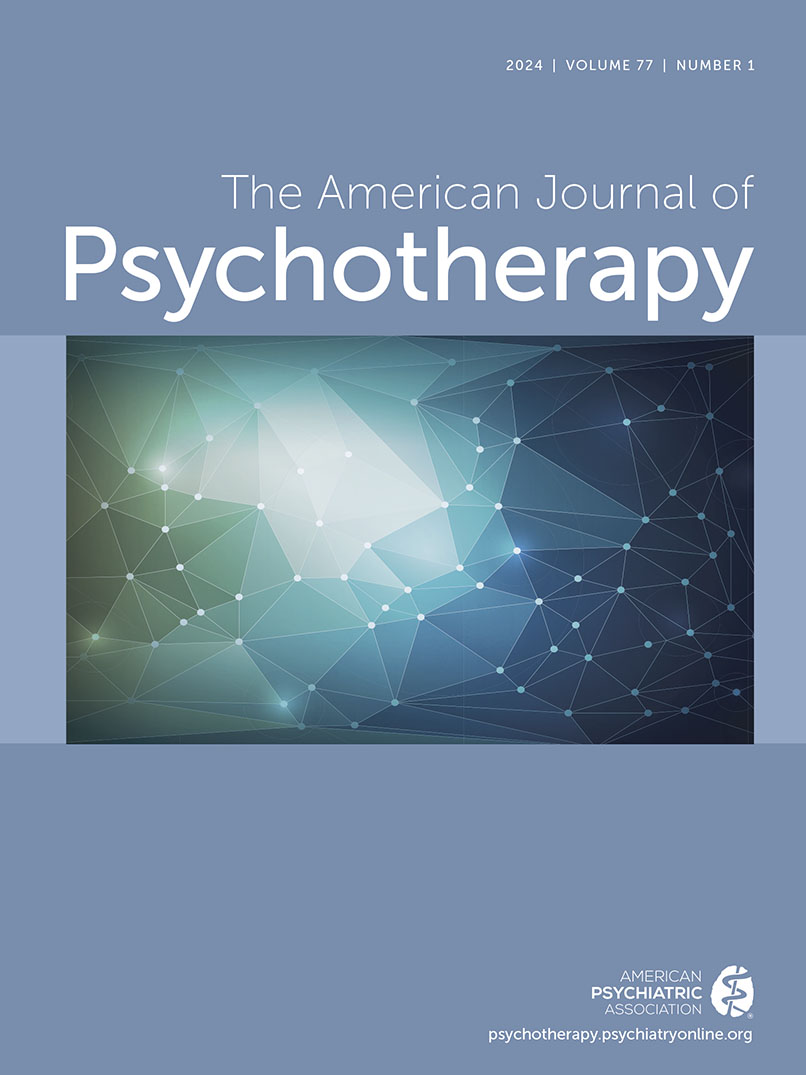American Journal of Psychotherapy
- Volume 44
- Number 4
- October 1990
Editorial
Publication date: 01 October 1990
Pages467–470https://doi.org/10.1176/appi.psychotherapy.1990.44.4.467Articles
Publication date: 01 October 1990
Pages471–483Political-social matters are rarely mentioned during psychotherapy despite increasing public concerns about the serious nature of the nuclear, societal, and environmental problems that exist in the world. The reasons for this avoidance are explored and ...
https://doi.org/10.1176/appi.psychotherapy.1990.44.4.471Publication date: 01 October 1990
Pages484–498Abuse and neglect oj students by teachers, and abuse of teachers by students are widespread, but their frequency and consequences are undocumented. The effects are seen in some patients with diagnoses such as posttraumatic stress disorder, dissociative ...
https://doi.org/10.1176/appi.psychotherapy.1990.44.4.484Publication date: 01 October 1990
Pages499–505This article chronicles the rise and fall of the concept of the “schizophrenogenic mother” popular in the psychotherapeutic literature from the 1940s to the 1970s. Sociocultural and ideological factors leading to the use of this damaging hypothesis—that ...
https://doi.org/10.1176/appi.psychotherapy.1990.44.4.499Publication date: 01 October 1990
Pages506–515The authors describe ways the therapist can facilitate a sense of relatedness with the schizophrenic patient; how the therapist identifies and then joins that part of the patient which is in conflict with his/her psychosis; and how these techniques allow ...
https://doi.org/10.1176/appi.psychotherapy.1990.44.4.506Publication date: 01 October 1990
Pages516–524The ways of knowing another person are limited to self-reports, creative expressions, observations by others, and empathic identification. Unfortunately, each of these approaches, while valuable, possesses shortcomings, many of which can be bypassed by ...
https://doi.org/10.1176/appi.psychotherapy.1990.44.4.516Publication date: 01 October 1990
Pages525–535This article describes the individual psychotherapy of an eight-year-old boy who had been sexually traumatized by his biological father. To break the reenactment cycle, it was crucial to facilitate expression of the positive as well as the negative ...
https://doi.org/10.1176/appi.psychotherapy.1990.44.4.525Publication date: 01 October 1990
Pages536–551In four clinical cases, the particular form of the child’s pseudomaturity recollects the image of the lost parental figure, thereby enhancing attachment to the remaining parent. Forces that sustain this defense mechanism include actual family instability ...
https://doi.org/10.1176/appi.psychotherapy.1990.44.4.536Publication date: 01 October 1990
Pages552–562What is the connection between adolescent suicide and parental alcoholism? This is explored by comparing a normal, nonsuicidal development against a development of self, from an object-attachment approach, impacted by parental alcoholism. A case study ...
https://doi.org/10.1176/appi.psychotherapy.1990.44.4.552Publication date: 01 October 1990
Pages563–576A series of family dramas by the Pulitzer Prize-winning American playwright Sam Shepard provides a shocking look at the breakdown of the family as central organizing unit. Using Curse of the Starving Class as a model, this article examines family ...
https://doi.org/10.1176/appi.psychotherapy.1990.44.4.563Publication date: 01 October 1990
Pages590–597A therapist’s personal crisis during the course of psychotherapy impacts the work, the relationship, the therapist, and the patient. A patient-therapist’s experience of her therapist’s illness is the focus of this paper. The author surveys the literature, ...
https://doi.org/10.1176/appi.psychotherapy.1990.44.4.590Case Report
Publication date: 01 October 1990
Pages577–589This paper discusses the unique aberrational fantasies of pregnant women with a previous history of psychiatric disturbance. A 22-year-old primigravida with a prior history of schizoaffective disorder disclosed several dreams to her therapist that ...
https://doi.org/10.1176/appi.psychotherapy.1990.44.4.577Book Review
Publication date: 01 October 1990
Pages599–600https://doi.org/10.1176/appi.psychotherapy.1990.44.4.599Publication date: 01 October 1990
Pages600–601https://doi.org/10.1176/appi.psychotherapy.1990.44.4.600aPublication date: 01 October 1990
Pages601–602https://doi.org/10.1176/appi.psychotherapy.1990.44.4.601Publication date: 01 October 1990
Pages602–603https://doi.org/10.1176/appi.psychotherapy.1990.44.4.602Publication date: 01 October 1990
Pages603–604https://doi.org/10.1176/appi.psychotherapy.1990.44.4.603Publication date: 01 October 1990
Pages604–605https://doi.org/10.1176/appi.psychotherapy.1990.44.4.604Publication date: 01 October 1990
Pages605–606https://doi.org/10.1176/appi.psychotherapy.1990.44.4.605Publication date: 01 October 1990
Pages606–607https://doi.org/10.1176/appi.psychotherapy.1990.44.4.606Publication date: 01 October 1990
Pages607–608https://doi.org/10.1176/appi.psychotherapy.1990.44.4.607Publication date: 01 October 1990
Pages608–609https://doi.org/10.1176/appi.psychotherapy.1990.44.4.608Publication date: 01 October 1990
Pages609–610https://doi.org/10.1176/appi.psychotherapy.1990.44.4.609Publication date: 01 October 1990
Pages610–611https://doi.org/10.1176/appi.psychotherapy.1990.44.4.610Publication date: 01 October 1990
Pages611–612https://doi.org/10.1176/appi.psychotherapy.1990.44.4.611Publication date: 01 October 1990
Pages613–614https://doi.org/10.1176/appi.psychotherapy.1990.44.4.613aPublication date: 01 October 1990
Pages614–615https://doi.org/10.1176/appi.psychotherapy.1990.44.4.614Publication date: 01 October 1990
Pages615–616https://doi.org/10.1176/appi.psychotherapy.1990.44.4.615aPublication date: 01 October 1990
Pages617–618https://doi.org/10.1176/appi.psychotherapy.1990.44.4.617Index
Publication date: 01 October 1990
Pages619–625https://doi.org/10.1176/appi.psychotherapy.1990.44.4.619Past Issues
View Issues Archive
Vol. 77 | No. 4

Vol. 77 | No. 3

Vol. 77 | No. 2
